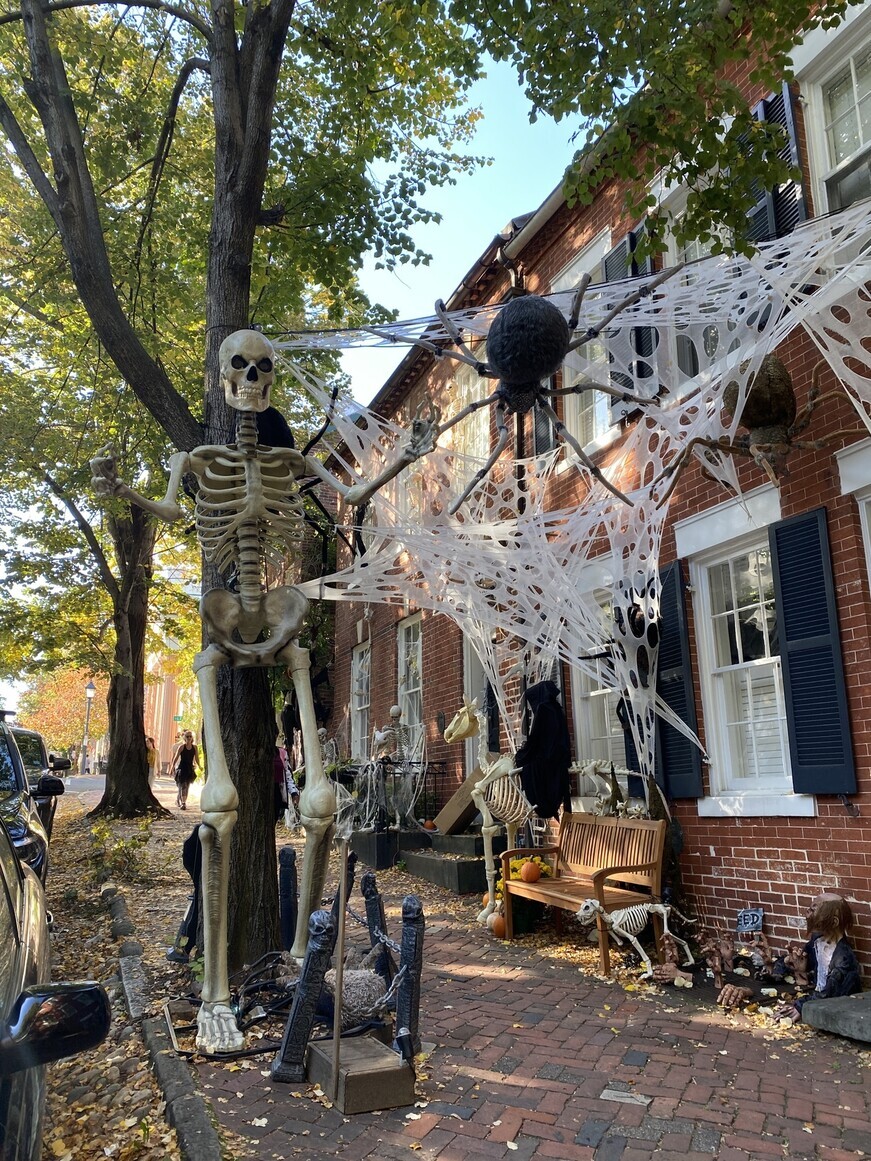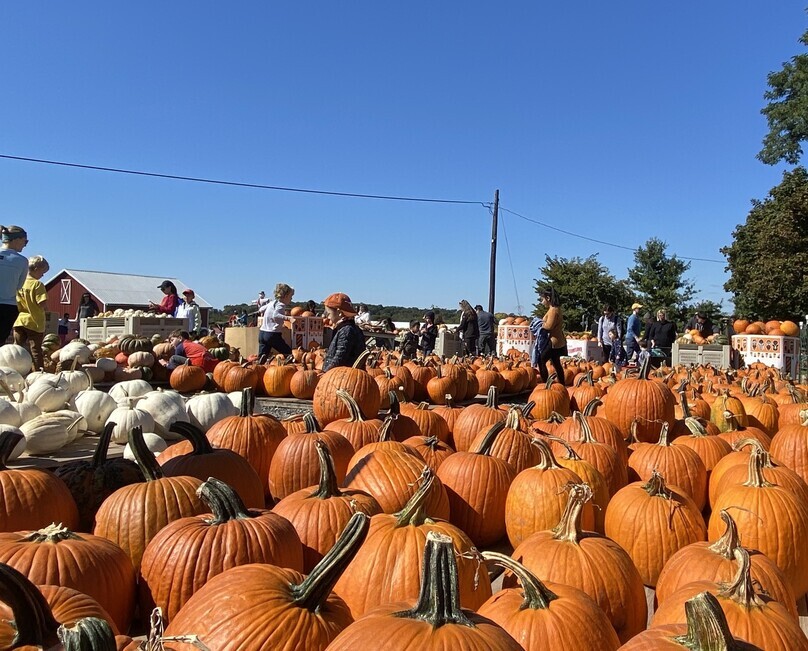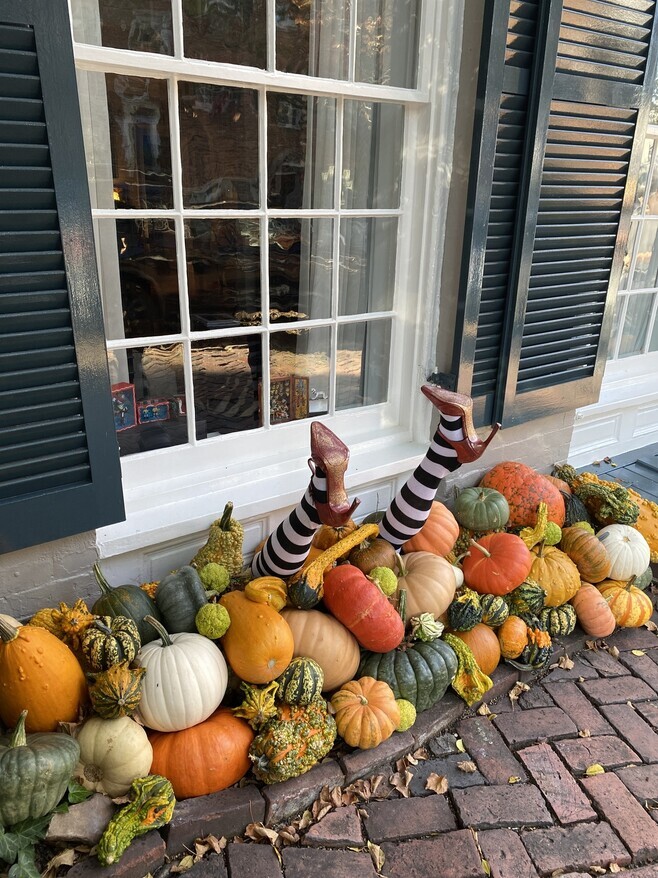hankyoreh
Links to other country sites 다른 나라 사이트 링크
How young Koreans came to celebrate Halloween

The tragic crowd crush in Seoul on Saturday evening took place ahead of Halloween, a holiday that is considered one of the major autumn festivals in the US — and one that has become increasingly popular among Koreans in the past few years, particularly among younger people and at daycare centers and kindergartens.
The origins of Halloween are said to lie with the festival of Samhain, which was held by the Celtic inhabitants of Ireland every Oct. 31, the day before the Christian solemnity of All Saint’s Day.
Halloween eventually spread through the US as around a million Irish people arrived there in the mid-1840s, fleeing a massive famine caused by potato blight. Today, many American families decorate their homes with Halloween symbols such as jack-o’-lanterns, spiders, skeletons and witches.

It isn’t clear when or how Halloween became popularized in Korea. But some cultural researchers suggest that the American-style holiday arrived in Seoul nightlife neighborhoods such as Itaewon and the vicinity of Hongik University by way of Japan, where it had become combined with costume play (cosplay) culture.
Indeed, its popularization coincided with the rapid commercialization of Itaewon that began around the mid-’00s.
Recent years have seen a rapid increase in Halloween fashion shows and parties at facilities for small children, including daycare centers and English-language kindergartens.
“The kindergarten affiliated with the elementary school our 7-year-old son attends holds Halloween events every year,” said a 44-year-old parent surnamed Lee who lives in Seoul’s Nowon District.
“This year, they had the children doing a Halloween costume fashion show and trick-or-treating, where they visited agreed-upon locations to get Halloween candy,” Lee added.

Lee Taek-gwang, a professor of global communications at Kyung Hee University, explained in a telephone interview with the Hankyoreh on Sunday that “commercialization” and “social media” are keys to understanding the Halloween trend.
“Halloween, which can be seen as one of the most representative US holidays, really became commercialized as it combined with cosplay culture in Japan, and as that commercialized version of Halloween arrived in Korea, it became established as a culture for the younger generation,” he said.
“In particular, Halloween has drawn attention as a visual element on social media like Instagram, where it is a way of producing the most powerful effects for members of the younger generation who are exploring their own identity,” he added.
By Choi Sung-jin, staff reporter
Please direct questions or comments to [english@hani.co.kr]

Editorial・opinion
![[Editorial] Intensifying US-China rivalry means Seoul must address uncertainty with Beijing sooner than later [Editorial] Intensifying US-China rivalry means Seoul must address uncertainty with Beijing sooner than later](https://flexible.img.hani.co.kr/flexible/normal/500/300/imgdb/original/2024/0517/8117159322045222.jpg) [Editorial] Intensifying US-China rivalry means Seoul must address uncertainty with Beijing sooner than later
[Editorial] Intensifying US-China rivalry means Seoul must address uncertainty with Beijing sooner than later![[Column] When ‘fairness’ means hate and violence [Column] When ‘fairness’ means hate and violence](https://flexible.img.hani.co.kr/flexible/normal/500/300/imgdb/original/2024/0516/7417158465908824.jpg) [Column] When ‘fairness’ means hate and violence
[Column] When ‘fairness’ means hate and violence- [Editorial] Yoon must stop abusing authority to shield himself from investigation
- [Column] US troop withdrawal from Korea could be the Acheson Line all over
- [Column] How to win back readers who’ve turned to YouTube for news
- [Column] Welcome to the president’s pity party
- [Editorial] Korea must respond firmly to Japan’s attempt to usurp Line
- [Editorial] Transfers of prosecutors investigating Korea’s first lady send chilling message
- [Column] Will Seoul’s ties with Moscow really recover on their own?
- [Column] Samsung’s ‘lost decade’ and Lee Jae-yong’s mismatched chopsticks
Most viewed articles
- 1[Editorial] Transfers of prosecutors investigating Korea’s first lady send chilling message
- 2[Exclusive] Unearthed memo suggests Gwangju Uprising missing may have been cremated
- 3[Column] US troop withdrawal from Korea could be the Acheson Line all over
- 4[Column] When ‘fairness’ means hate and violence
- 5‘Shot, stabbed, piled on a truck’: Mystery of missing dead at Gwangju Prison
- 6S. Korea “monitoring developments” after report of secret Chinese police station in Seoul
- 7[Editorial] Intensifying US-China rivalry means Seoul must address uncertainty with Beijing sooner t
- 8US has always pulled troops from Korea unilaterally — is Yoon prepared for it to happen again?
- 9China calls US tariffs ‘madness,’ warns of full-on trade conflict
- 10Seoul government announces comprehensive measures to prevent lonely deaths